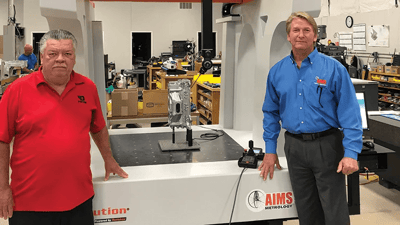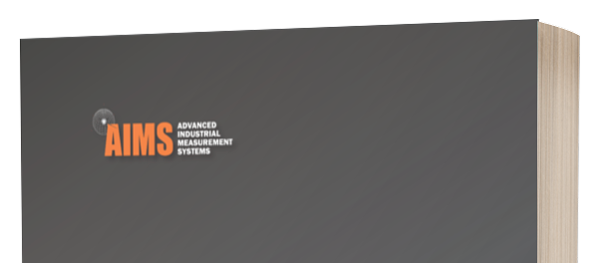Don't have time to read this article? Watch it instead!
Linearity is a term used to describe mathematical relationships, but it also refers to a type of high-performance motor. Basically, the technology uses linear motion to move a payload at a specified acceleration, speed, travel distance and accuracy. You’ll see linear motors used in gimbals, rotary tables, 6-axis robot arms and coordinate measuring machines like AIMS’ 5-axis LM and its new Summit 10.10.10.
If you look at the marketplace, the topic of linear motors can be a bit confusing. Terms like Linear Induction Motor (LIM) and Permanent Magnet Linear Synchronous Motor (PMLSM) refer to systems with slightly different internal designs. It’s important to understand the basics about how these motors function if you are considering a machine that uses one.
The linear induction motor was first introduced in 1905. It uses a “primary,” [stack of electrical steel laminations and copper coils powered by three-phase voltage] and a “secondary” [made up of steel plate and copper or aluminum plate] system. The primary coils must be energized to magnetize the secondary field and create an interaction that generates force.
PMLSM motors use the same primary setup as linear induction motors, but the secondary is composed of permanent magnets mounted on a steel plate. This configuration gives the PMLSM a slight advantage over a linear induction motor because it creates a permanent magnetic field in the secondary. With a linear induction motor, interaction between the primary and secondary is only initiated after a field of eddy currents is created in the secondary. Fabricators can experience a delay or “slip” with this approach.
AIMS uses a third type of linear motor in its coordinate measuring machines. It’s called the Direct Drive Linear (DDL) Motor. In this system the rotary motor is laid out flat, allowing the load to be connected directly to the motor.
Unlike conventional motors, the DDL doesn’t use ball screws, belts, a rack and pinion drive or any other type of mechanical components. That means load inertia is reduced and more dynamic moves can be performed, such as higher acceleration and deceleration rates with heavier loads and less overshoot and oscillation. Its compact footprint makes it easier to integrate the motor into machines and systems with tight spaces. The DDL produces less noise, and because there are no traditional mechanical components, maintenance is drastically reduced.
For AIMS’ 5-axis LM and Summit CMMs, the DDL motor allows the equipment to maintain the accuracy levels required by industries like aerospace, medical and automotive. Throughput rises because downtime is reduced. The LM and Summit 10.10.10 are able to operate at an optimum output level for years because there are no maintenance requirements.
The LM features a direct drive linear motor system for the X- and Y-axes, which provides extremely smooth and quiet acceleration and linear velocity. The Summit also runs on a direct drive linear motor which supports high-volume, large part inspection with the industry’s largest 1-meter-cubed measuring capacity.
If you are interested in reducing your maintenance costs and achieving consistent, repeatable accuracy, then contact us today about our technology. We’d love to discuss your part measurement and inspection needs.



